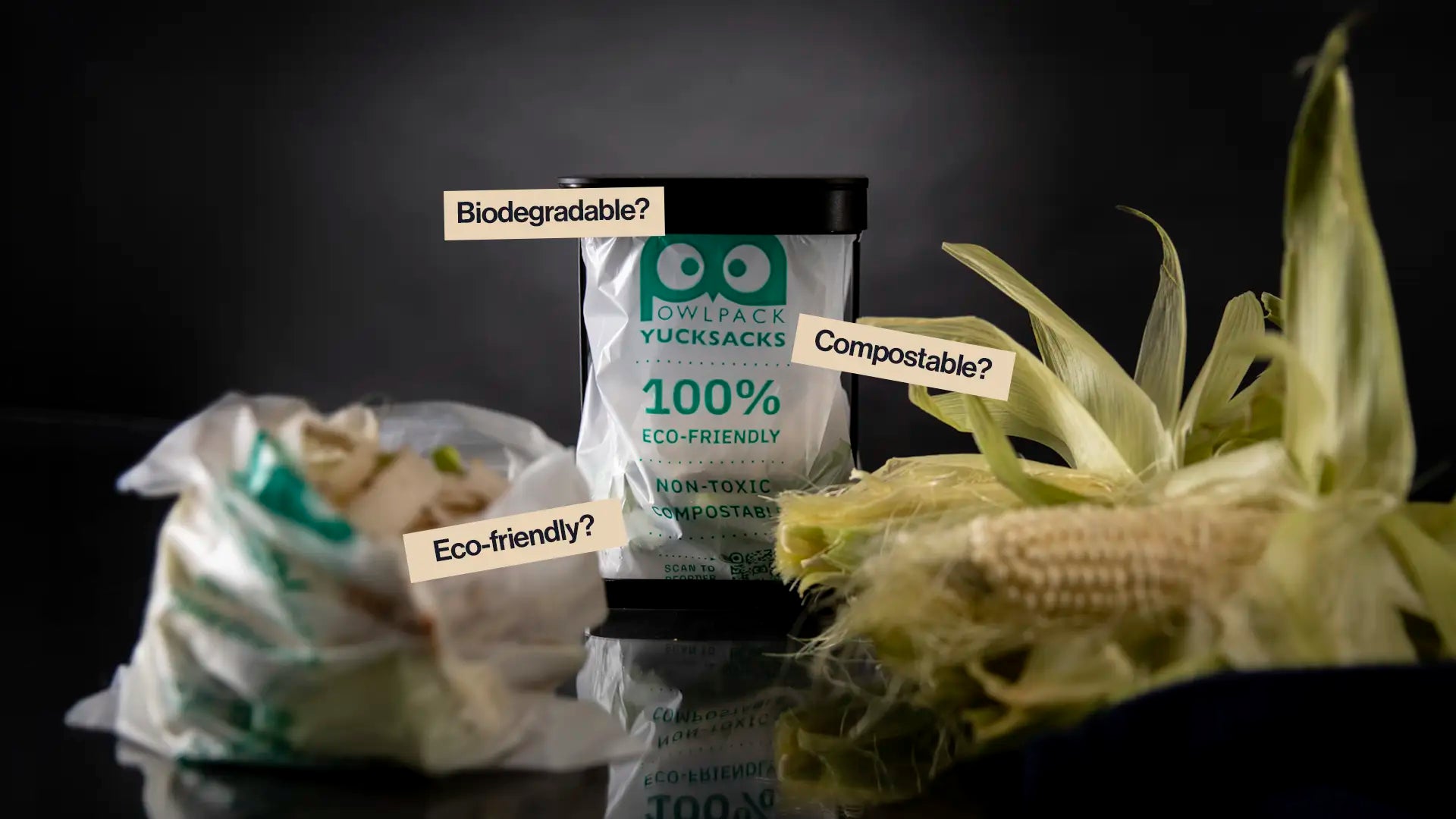Switching to compostable bags is a big step toward reducing waste and living more sustainably. But using them correctly is key to making sure they actually break down the way they’re designed to. Misuse can lead to contamination, messes, or—worst of all—bags ending up in the landfill with no chance to compost.
Here are the 7 most common mistakes people make with compostable bags—and how to avoid them.
1. Mistaking “Biodegradable” for “Compostable”
The mistake: Thinking anything labeled "biodegradable" is compost-friendly.
Why it matters: “Biodegradable” isn’t a regulated term and doesn’t mean the item will break down safely or completely. Some leave microplastics behind.
Fix it: Always look for certifications like BPI, TÜV Austria, or ASTM D6400—like Owlpack Yucksack Bags—to ensure your bags are truly compostable.
2. Using Compostable Bags for Regular Trash
The mistake: Tossing everything—plastic, wrappers, and all—into compostable bags and treating them like regular garbage bags.
Why it matters: Compostable bags are designed to break down with organic waste. Using them for landfill-bound trash defeats their purpose and wastes their potential.
Fix it: Reserve compostable bags for food scraps, paper napkins, and other compost-safe items only.
3. Letting Bags Sit Too Long
The mistake: Leaving food-filled compostable bags in your kitchen bin for too many days.
Why it matters: Compostable materials are meant to decompose. If left too long, bags can start breaking down early, causing leaks and odor.
Fix it: Empty your compost bin every 2–3 days, even if the bag isn’t full.
4. Using Them in the Wrong Conditions
The mistake: Expecting compostable bags to break down in landfills or dry environments.
Why it matters: Composting requires oxygen, moisture, and microorganisms. A sealed landfill doesn’t provide that, so compostable bags won’t degrade properly.
Fix it: Always dispose of compostable bags in a home compost bin or municipal green bin that accepts certified compostables.
5. Putting the Wrong Things Inside
The mistake: Tossing in meat, dairy, greasy food, or non-organic waste.
Why it matters: These items can attract pests, create odors, or disrupt the composting process, especially in a home setup.
Fix it: Stick to vegetable peels, coffee grounds, eggshells, and paper products unless your city explicitly allows other materials in compost bins.
6. Not Storing Bags Properly
The mistake: Leaving bags in a hot car or under a humid sink for months.
Why it matters: Compostable materials are sensitive to heat and moisture. Over time, they can weaken or break down prematurely.
Fix it: Store bags in a cool, dry place, and only open a new roll when you need it.
7. Assuming All Compostable Bags Are the Same
The mistake: Grabbing any bag labeled “eco” or “green” without checking its specs.
Why it matters: Many bags marketed as “eco-friendly” aren’t certified or suitable for real composting. Some are only compostable in industrial settings.
Fix it: Choose high-quality, certified bags—like Owlpack Yucksack Bags, which are made to perform and break down safely in real composting environments.
Final Thought
Compostable bags are an amazing tool—but only if used the right way. By avoiding these common mistakes, you can keep your kitchen cleaner, your compost pile healthier, and your environmental impact low.
Want to get started? Check out Owlpack’s certified compostable Yucksack Bags —strong enough for everyday use, made to disappear when it counts.



Share:
Compostable vs. Biodegradable vs. Recyclable—What’s the Difference?
Do Compostable Bags Really Break Down? We Put Yucksack to the Test